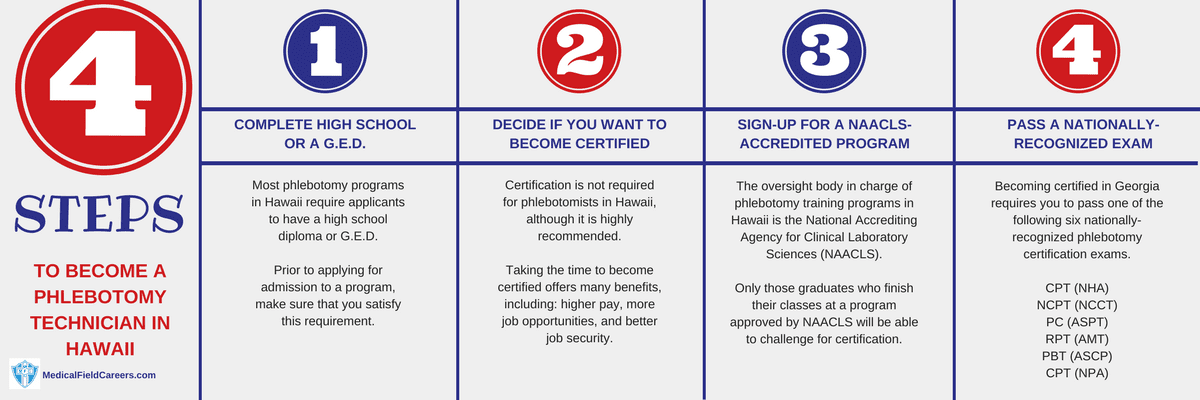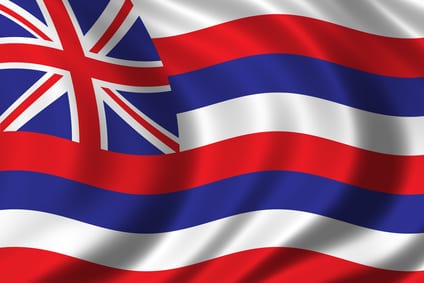The demand for aspiring phlebotomy technicians is sky high and the phlebotomy schools in Hawaii are looking to fill that demand. The United States Bureau of Labor Statistics predicts tremendous growth over the next decade and we cover it all in detail for you. See what it takes to get started below!
How to become a phlebotomy technician in Hawaii
There aren’t any state-specified standards for becoming a phlebotomy technician in Hawaii. Consequently, phlebotomists working in the state aren’t required to have a official certification, but employers definitely want to hire certified individuals.
What is the process for becoming a certified phlebotomist in Hawaii?
The easy steps for becoming a phlebotomy technician in HI is summarized below in the following steps.

Step 1 – Get your high school diploma or G.E.D.
No matter which career you choose to pursue, receiving a high school diploma should be considered the initial step. Finding a position in the healthcare field is no different.
Step 2 – Determine if you are required to be certified as a phlebotomist in Hawaii
There isn’t a legal prerequisite to get certified in order to become employed as a phlebotomist in Hawaii. As you may probably assume, choosing to make an effort to become certified offers several important advantages. Being certified is now viewed as a prerequisite by a large number of facilities who see it as a way to safeguard their practices against possible lawsuits and soaring insurance rates.
Recommended Phlebotomy Classes in Hawaii
Step 3 – Graduate from a phlebotomist training program accepted by the state of Hawaii
Phlebotomist education in Hawaii is managed by the National Accrediting Agency for Clinical Laboratory Sciences (NAACLS). You need to complete a program sanctioned by this organization to be approved to challenge for certification in the state.
What to look for in a phlebotomy program in Hawaii
It’s important to check out a few things when deciding where to sign up for training courses. Think about the things that matter most to you when are comparing a program to another.
Phlebotomist schools in Hawaii
The link directly below will get you to a list of all the NAACLS-approved phlebotomist programs near you.
Step 4 – Successfully pass your Hawaii phlebotomy certification exam
The official phlebotomy certification exams given in Hawaii are the seven main national examinations. The tests consist of sections on all principal areas of knowledge you would’ve covered in your program.
Some of the main national certification tests administered in Hawaii are listed for you here.
Phlebotomist salary and jobs in Hawaii
In Hawaii, and the rest of the country, demand is very high for phlebotomists. Although the Bureau of Labor Statistics projects a 25% increase in brand new positions for phlebotomy technicians nationally up through 2024, the organization is expecting to see a 17% growth in Hawaii. Below you will find a list of the largest towns and cities in Hawaii and even more info on phlebotomy compensation by area and county.
| Location | Pay Type | Low | Median | High |
|---|---|---|---|---|
| United States | Hourly | $11.22 | $15.72 | $22.52 |
| Yearly | $23,330 | $32,710 | $46,850 | |
| Hawaii | Hourly | $12.73 | $16.67 | $22.60 |
| Yearly | $26,470 | $34,670 | $47,020 | |
| Hawaii/Maui/Kauai BOS | Hourly | $12.71 | $16.71 | $22.37 |
| Yearly | $26,430 | $34,760 | $46,520 |

